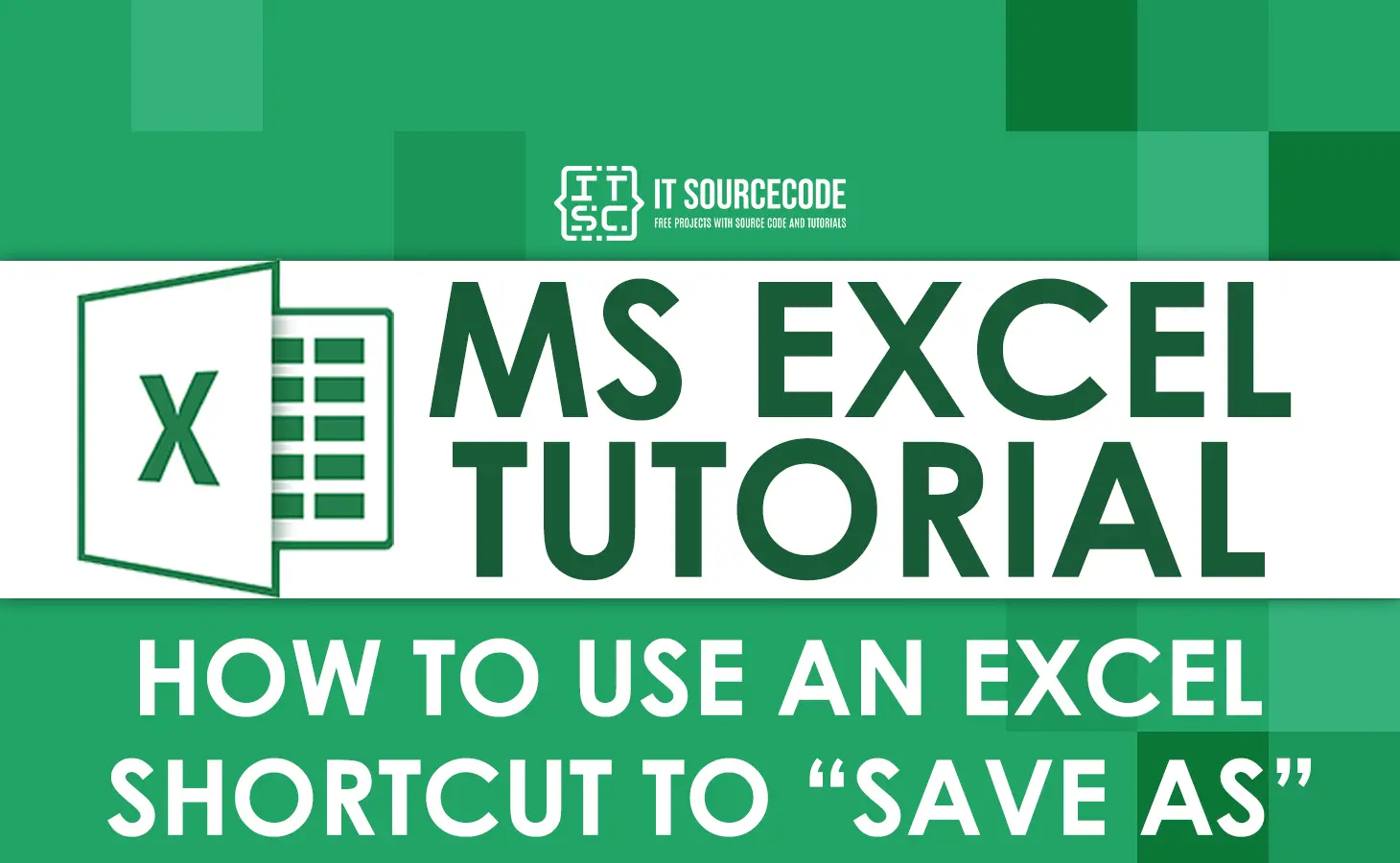The Excel shortcut to save as or to save is a nice way to get the job done quickly and easily. Sometimes it can be difficult to find the right shortcuts to save time and increase productivity.
Fortunately, in just a few keystrokes, you can easily save your worksheet using the keyboard shortcut to save as in Excel that we prepared for you. In this article, we will hand you the key on how to use Excel shortcut for save as, so that it won’t be hard for you to save your worksheet.
What is the Excel Shortcut to “Save As”?
The Excel shortcut to save as is a quick and efficient way to save a copy of your worksheet with a new name or in a different file format. This means you can keep your original worksheet intact while also having another copy that you can easily share or use for another purpose.
With this shortcut, users can save the data in a separate file from its original copy.
Why is the Excel Shortcut for “Save As” Important?
It is important for a number of reasons:
First, it allows you to keep your original workbook intact, which is particularly useful if you’re working on a project over an extended period of time and want to keep track of changes.
Secondly, it enables you to share your workbook with others, either by emailing it or by saving it in a file format that can be easily opened by others.
Lastly, it gives you the flexibility to save your workbook in different file formats, depending on your needs.
How to Use the Excel Shortcut to “Save As”
To use the Excel shortcut for save as, follow these simple steps:
- Click on the “File” tab in the ribbon menu.
- Select “Save As.”
- In the “Save As” dialog box, choose the location where you want to save the new file.
- Enter a new name for the file in the “File name” field.
- Choose the file format you want to save the file in. For example, you can choose “Excel Workbook” to save it as an .xlsx file, or “PDF” to save it as a .pdf file.
- Click “Save.”
How to Use the Keyboard Shortcut for “Save As” in Excel
In addition to the steps above, you can also use the keyboard shortcut for save as in Excel, which is the quickest and most efficient way to save a copy of your worksheet with a new name or in a different file format. The keyboard shortcut for the Excel shortcut to save as is “Ctrl + Shift + S.”
To use the keyboard shortcut to save as in Excel, follow these steps:
- In your worksheet press “Ctrl + Shift + S” or “F12.”
- In the “Save As” dialog box, choose the location where you want to save the new file.
- Enter a new name for the file in the “File name” field.
- Choose the file format you want to save the file in. For example, you can choose “Excel Workbook” to save it as an .xlsx file, or “PDF” to save it as a .pdf file.
- Click “Save.”
Note: The keyboard shortcut will not function unless you have selected any cells in your worksheet. This only happens if you newly open the file in Excel, then you have to save it under another file name or change the file format.
If the mentioned keyboard shortcut above does not function in your Excel version, here’s another thing you should know:
- In your Excel worksheet, press “Alt” + “F “+ “A” + “O.”
- It shows the “save as” dialog box; choose the location where you want to save the new file.
- Enter a new name for the file in the “File name” field.
- Click “Save.”
Note: Don't forget to press "Ctrl" + "S" every time you have changes in your worksheet before you "save as" to another file name.
“Ctrl” and “S” are the important keys to quickly save a file that you should remember when you are using the Excel save as shortcut. It is to save your newly added or removed data to your worksheet.
Conclusion
In conclusion, this tutorial will totally help you if you are having a hard time figuring out how to save your data in Excel. Here, we made a step-by-step guide in various ways so that you have a lot of keyboard shortcut choices when saving your worksheet.
We would love to hear some thoughts from you on this Excel shortcut to “save as” by commenting below. If this tutorial was really a great tool for you, practice it every time you working in your worksheet. Eventually, you will get used to it.
Thank you very much for continuing to read until the end of this article. In case you have more questions, feel free to comment. You can also visit our website for additional information.

